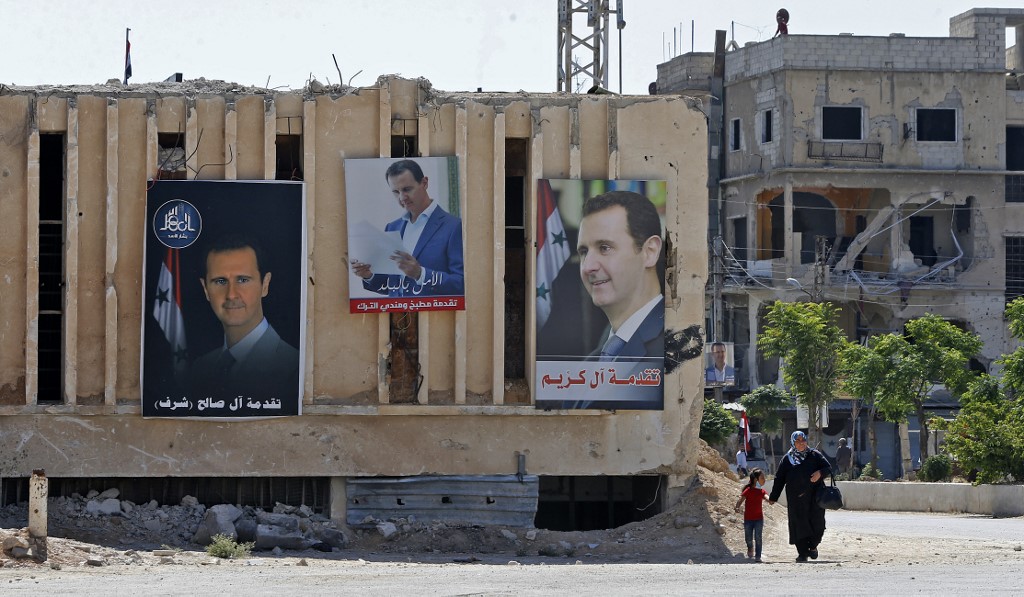Let’s imagine a scenario where all the severe Western sanctions imposed on the Syrian regime after 2011 have been lifted, the “siege” has ended, security instability has been quelled across Syria, and the government in Damascus has regained control over key resources like oil, gas, wheat, and cotton, much like Syria was before 2011, with Bashar al-Assad and his ruling elite remaining in power. In this context, does Syria truly await a “very big” future?
From the perspective of the Syrian regime’s leader, Bashar al-Assad, who expressed optimism about Syria’s future during a conversation with China Central Television, the answer seems clear. Al-Assad anticipates a prosperous future for Syria, drawing from the experience before 2011 when the country achieved impressive economic growth rates of 7%. During this period, Syria’s resources were under centralized control, the country had minimal external debt, and it benefited from robust exports of wheat, vegetables, fruits, and industrial development. Al-Assad believes that if the ongoing conflict ceased and reconstruction efforts were successful, Syria could surpass its pre-war state.
Resurrecting the Syrian National Project: The Suweida Uprising and the Path to Peace
However, this optimism raises questions. To gain insight into the complexities of this vision, one can refer to the research of Syrian scholar Muhammad Jamal Barout, as documented in his book “The Last Decade in Syria’s History: The Dialectic of Stagnation and Reform,” published in 2012. Barout’s work provides a detailed analysis of the deep economic and social issues that led to the major protests in Syria in 2011. These issues were exacerbated during the second half of Bashar al-Assad’s rule from 2005 to 2010.
While it is true that Syria experienced relatively high economic growth rates during that period, averaging 5.1% over the first decade of Assad’s rule, this growth did not lead to equitable development. Instead, it exacerbated wealth disparities between regions and social classes. The “authoritarian economic liberalization” model dominated economic policies, favoring services and tourism over productive sectors. This approach, aligned with a newly empowered business class within the government, contributed to imbalances in wealth distribution.
Barout points out that in a middle-income country like Syria, grappling with high inequality, distributive justice is more critical than mere economic growth. High growth rates did not alleviate poverty, inflation, or unemployment. The elites and powerful classes reaped the benefits, while the percentage of poor people increased, inflation rose, and unemployment soared.
Tax policies further distorted wealth distribution, reducing direct taxes that affect investors while increasing indirect taxes and customs duties that burden the population. As a result, development imbalances persisted, with growth primarily benefiting urban centers at the expense of rural areas.
In summary, Bashar al-Assad’s economic management model from 2005 to 2010 laid the groundwork for the 2011 protests due to wealth disparities and economic injustice. If the conditions for large-scale reconstruction under the Assad regime were to emerge, history might repeat itself, but on a larger scale. Assad’s vision for Syria’s future could perpetuate discrimination and inequity in wealth distribution, potentially leading to further unrest. The lessons of the past caution against a future scenario that mirrors these past inequalities.
In this context, Stephen Heydemann, an expert in Middle East affairs, previously warned that such a scenario could lead to a civil war in Syria, a prediction rooted in the same structural issues. Syria’s future hinges on addressing these fundamental challenges to achieve a more equitable and stable society.
This article was translated and edited by The Syrian Observer. The Syrian Observer has not verified the content of this story. Responsibility for the information and views set out in this article lies entirely with the author.


